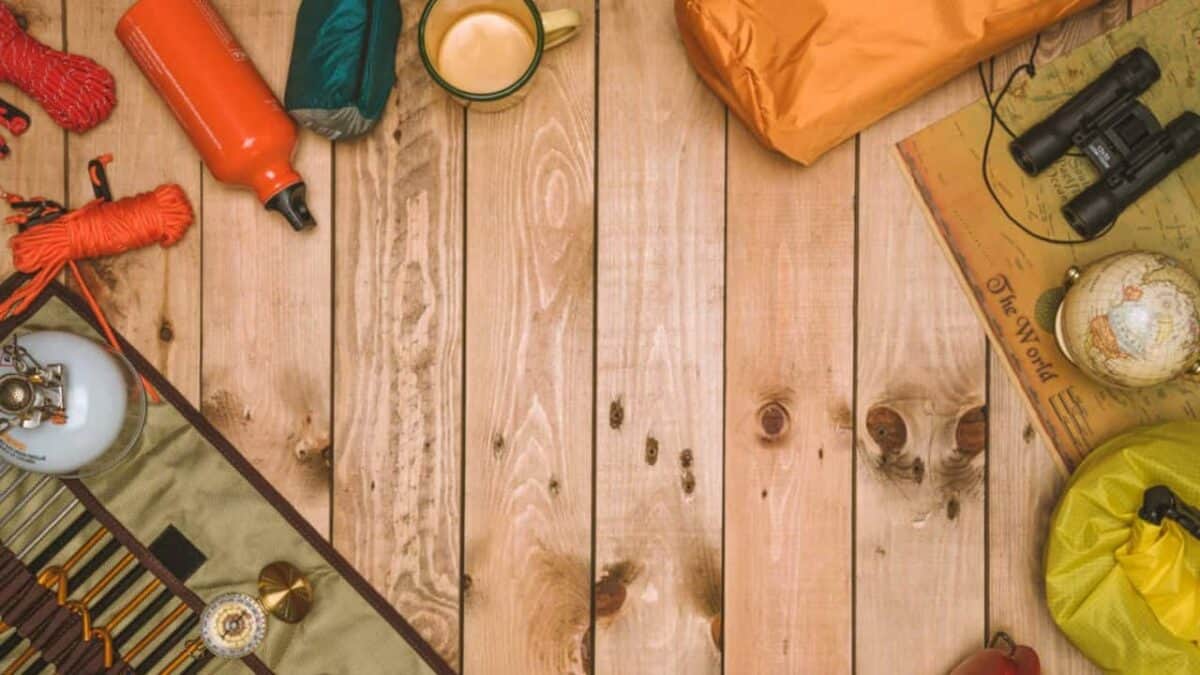For me, there are two types of wild camping. One where I am hiking all day and camp each night on a multiday hike like the West Highland Way. The other is when I drive somewhere with the kids and stay for a night or two. Obviously, the first requires that I keep my pack as light as possible. The second results in the car being stuffed with many luxuries. The following list includes ideas for both, bear in mind the total weight of your gear if you have to walk any distance.
Not sure what you should pack for your first wild camping adventure? Don’t worry – we’ve got you covered! Here’s a checklist of all the essential gear you’ll need for a trouble-free time in the Great Outdoors:
The Essentials Checklist
Outdoor Wear
Backpack
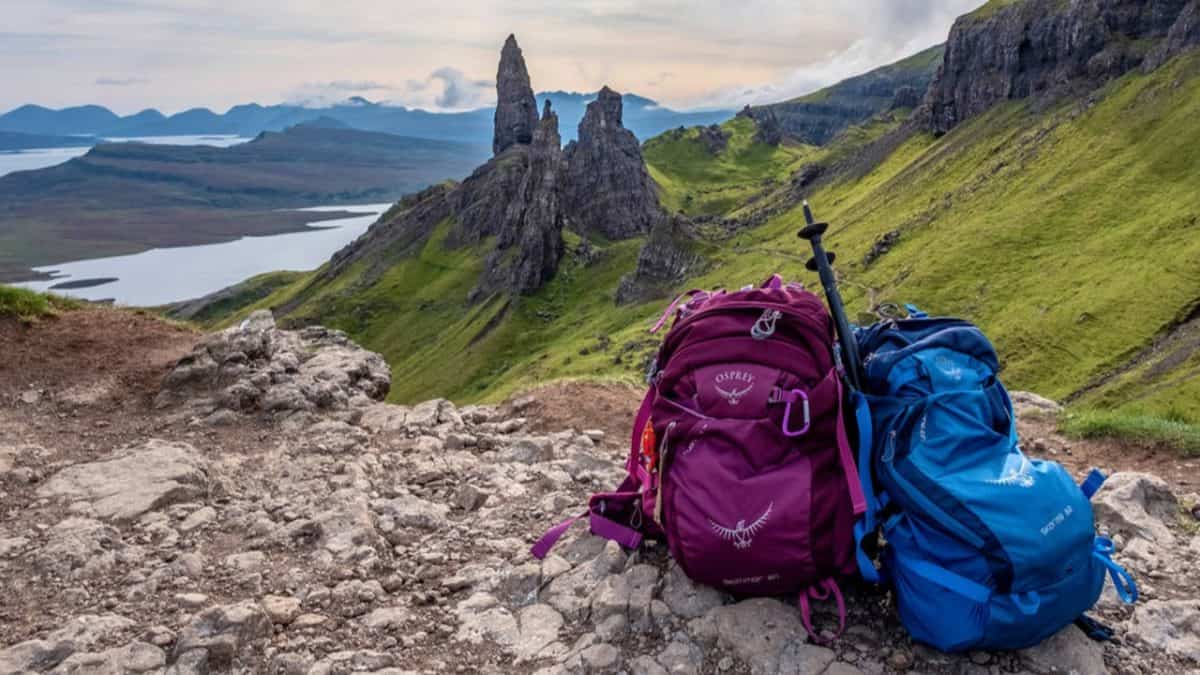
Obviously, nothing is more important than your backpack – you’ll be carrying most of your other gear in it. Get yourself a hiking backpack with a volume of between 60 and 85 liters and make sure that it’s comfortable, durable, and that it has a lot of compartments, pouches, and pockets. Also, try to go with one that distributes the weight as evenly as possible.
Day Bag & Dry Bag
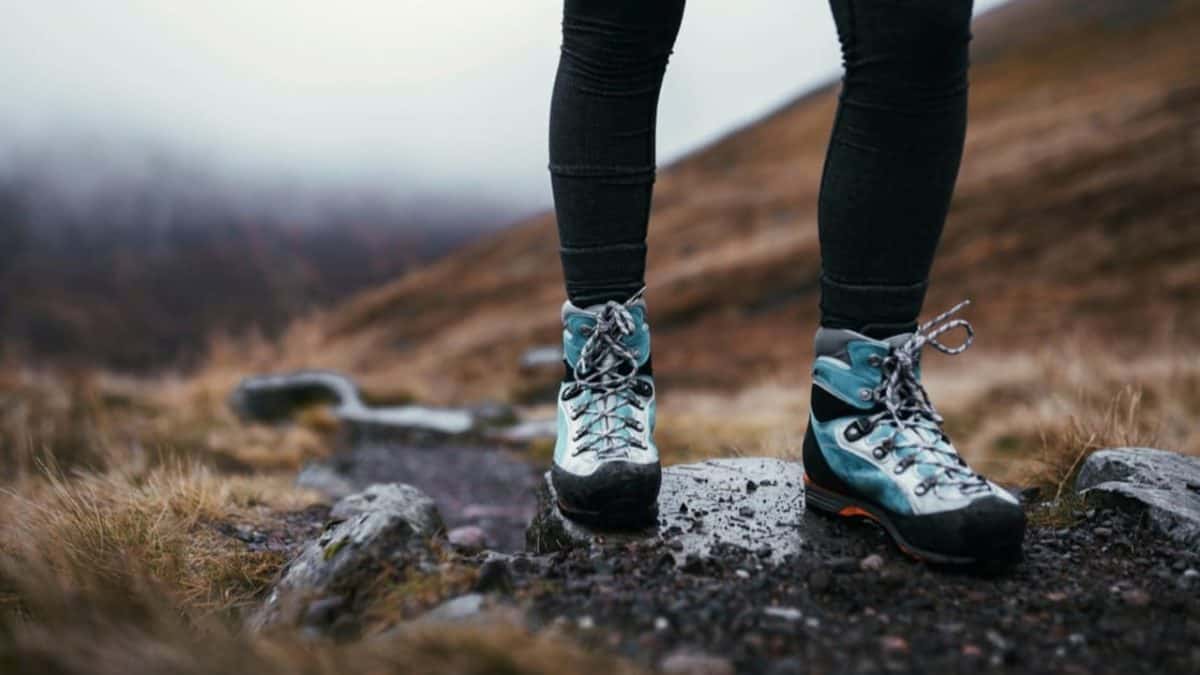
While wild camping, I like to leave most of my stuff at the camp and explore the surrounding area. For something like that, you’re going to need a smaller day bag. A dry bag, on the other hand, has the job of keeping your electronics dry, as its name suggests. It can come in extremely handy when you’re crossing wet terrain or when you have to deal with never-ending rain.
Hiking Wear / Cold-Weather Wear
Depending on the season during which you’re planning to go wild camping, you’ll need to use adequate protective gear. This often translates to garments such as fleece jumpers, insulated mid-layers, non-cotton walking trousers, and other clothes – only you know what’s the best for you. Obviously, those planning to go somewhere cold will have to buy the right coats, layers, and thermal underwear.
Rain Wear
Besides the drybag, another important piece of rain gear you’ll want to bring to your wild camping adventure is a good rain jacket – it will keep you from getting soaked in the middle of nowhere.
Sleeping Outfits
The outerwear mentioned above won’t really help you when it comes to getting quality sleep. For that matter, you will also have to pack some sleeping clothes, such as socks, tank tops, and pajamas.
Hiking Footwear
You can be absolutely sure that the rugged terrain that you’re bound to encounter while wild camping can and will test the durability of your footwear. This is why you’ll have to get yourself a pair of proper hiking shoes – do not go into the Great Outdoors in your urban sneakers.
Extra Pair of Slippers
As we’ve said above, having the right hiking footwear is incredibly important. But what about those leisurely moments when you’re just spending time in and around the camp? For that, you’ll need a pair of cheap flip-flops.
Underwear & Mesh Laundry Bag
Besides a few pairs of underwear that you carry with you whenever you’re hiking, make sure to pack some extra boxers and briefs for your wild camping trip. After all, accidents can happen when you’re out there. Also, don’t forget to take a mesh laundry bag, too – this item will help you separate your fresh clothes from the used ones.
Important Gear for Wild Camping
Tent
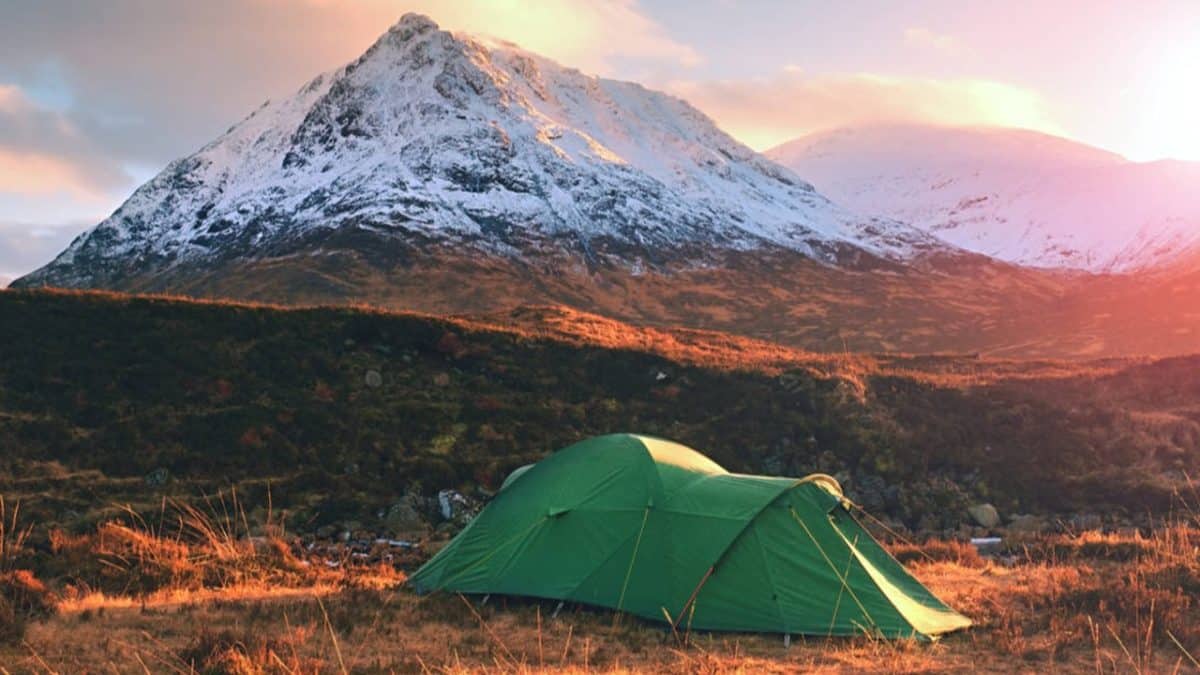
You know what they say – when you’re camping, your tent is your home away from home. For that matter, get yourself a wild camping tent that is well-made and durable, and which can be propped up without too much effort.
Tent Footprint, Stakes & Mallet
As its name suggests, the job of the tent footprint is to protect the tent’s bottom part from getting damaged while it’s in contact with the ground. Besides the footprint, make sure to pack a couple of additional stakes so that you don’t have to improvise at the camp. And to secure these stakes, you will also need a mallet.
Sleeping Bag & Pillow
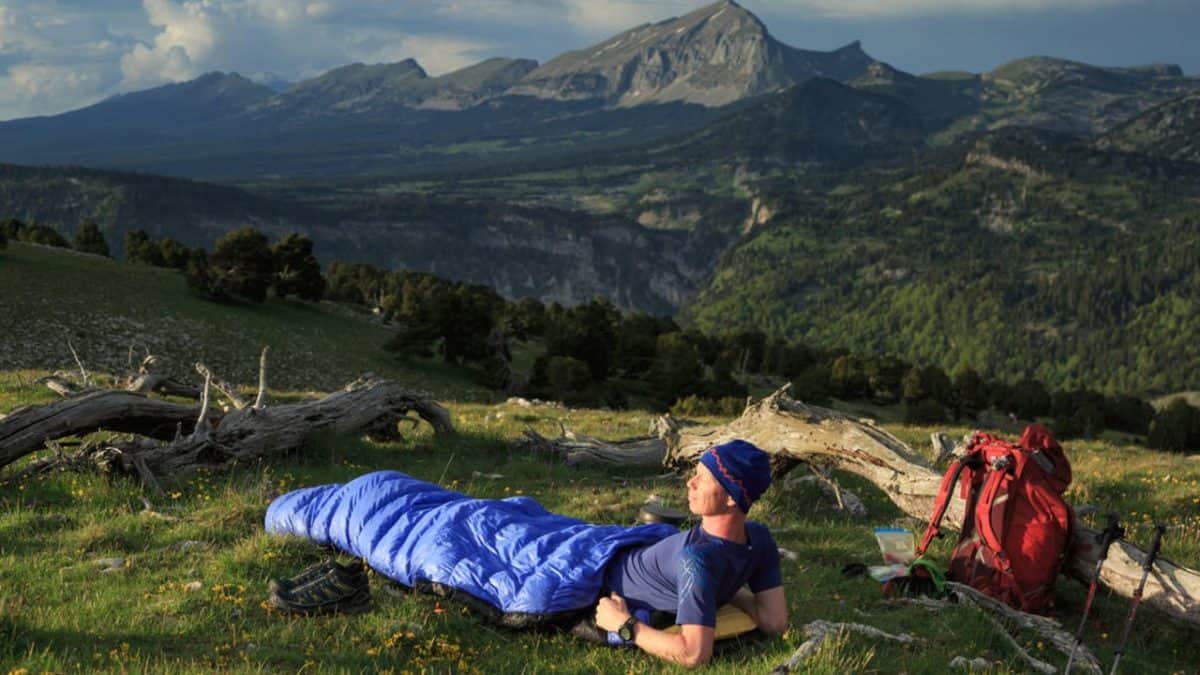
A cozy, well-made sleeping bag is an absolute must for wild campers. Not only will this piece of trekking gear help you sleep like a baby, but also protect you from the night’s cold. Also, make sure to buy a pillow for camping in case your sleeping bag comes without one.
Ground Tarp
A lot of campers underestimate the value of packing a good ground tarp, too. Not only can a ground tarp reinforce the footprint of your tent, but you can also use it to cover the tent when it’s too rainy or sunny.
Camping Cot & Chairs
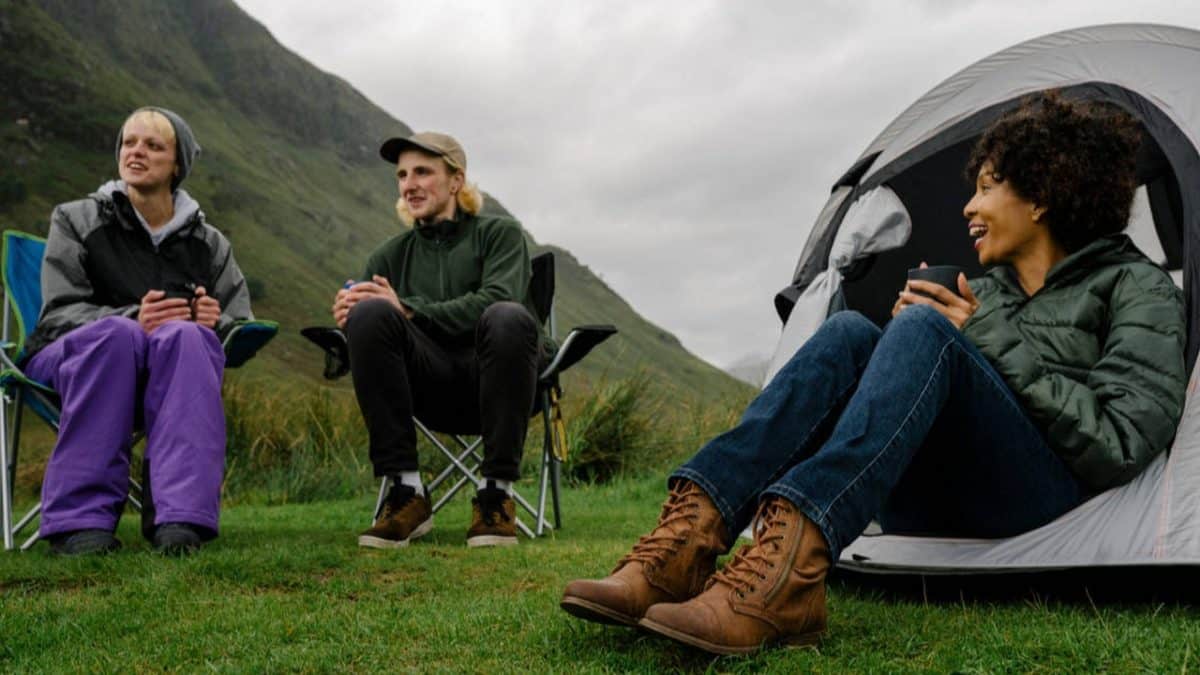
Sometimes, you will not want to sleep on the ground, and that’s when a camping cot can come in very handy. The camping chairs, on the other hand, are typically foldable, very portable, and can be attached to one’s backpack.
Cooking Equipment & Supplies
Clean Water
Obviously, bringing a portable jug that is capable of filtering water is the best solution. However, if that’s something you don’t want (or can’t) bring with you, make sure to bring lots of clean, potable water. If you are looking for a quality hiking water bottle, check out our Hydro Flask vs RTIC Bottle comparison.
Food & Drink
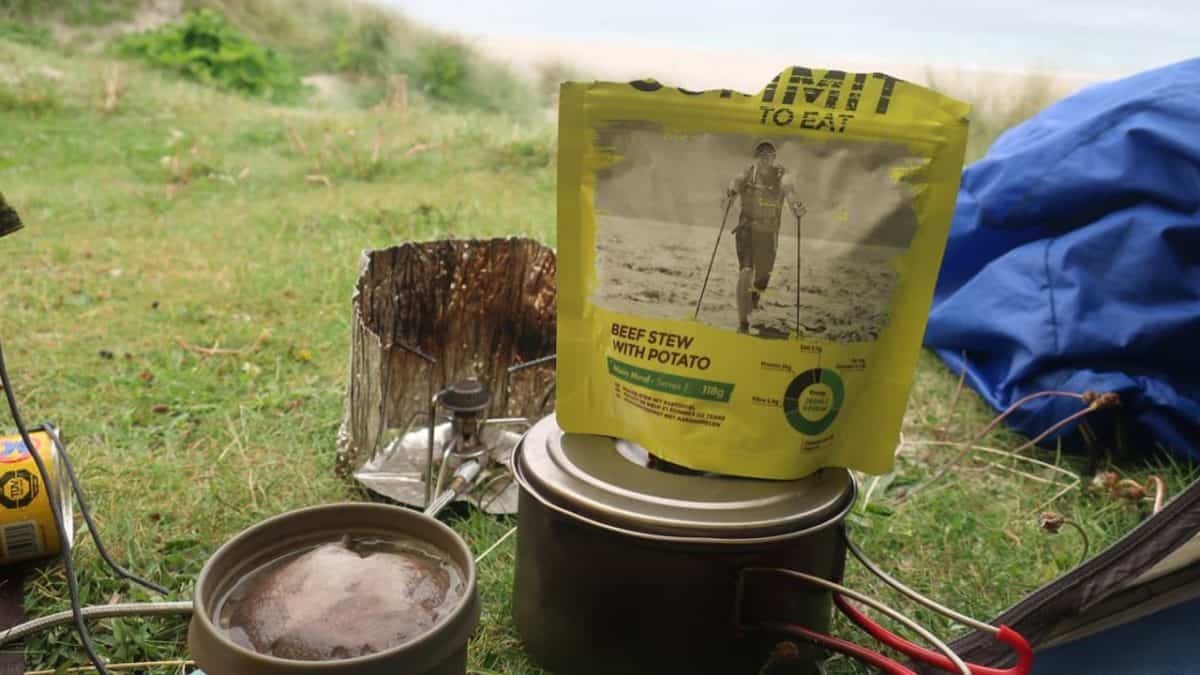
A true wild camping trip is one where you don’t stop at restaurants and pubs in villages and towns, but rather make food and drinks on your own. Make sure to bring meals that can be made by adding water, like, for example, dry pasta pouches or instant oats. Also, don’t forget to pack an ample supply of cured meat and jerky, as well as calorific, energy-dense snacks containing nuts and dried fruit. Don’t forget that foods with fats, protein, and slow-release carbs are the ones that will keep you going.
Camping Stove, Firewood & Matches
Another absolutely essential item for wild camping is a portable camping stove. For cooking in the wilderness, you can choose either a gas-operated or a wood-burning stove. If you decide to go with the latter option, make sure to buy some firewood from the hardware store if the area you’ll be wild-camping in doesn’t have any trees. Don’t forget the matches, too – these will allow you to start fires to cook food or keep yourself warm. For more information, check out my post on the best backpacking stoves.
Pans, Dutch Ovens & Pots
It doesn’t really matter how good you are when it comes to campfire cooking – having the right cookware is certainly going to help you get the job done faster and better. Depending on the area you’ll be wild camping in, you may also want to bring a couple of bear-resistant food containers. A potholder, on the other hand, will protect you from getting burned by the hot metal of the cookware.
Plates, Utensils & Can Opener
If you want to keep things minimal, just pack a few bowls and a couple of forks and spoons. If you’re planning on packing canned food, you will definitely need a can opener, too.
Coffee Pot & Mugs
If you’re one of those people who can’t live without coffee no matter where they are, make sure to pack a coffee pot and a stash of your coffee supplies. And when it comes to mugs, you’ll want to get one that is double-walled and made out of stainless steel, so that you can use it for all of your wild camping adventures in the future.
Cooler With Ice
While this appliance certainly isn’t something that you’ll absolutely need in the wild, it can come in very handy during long summer hikes. It will keep your food and drinks cold and refreshing.
Thermos Flask
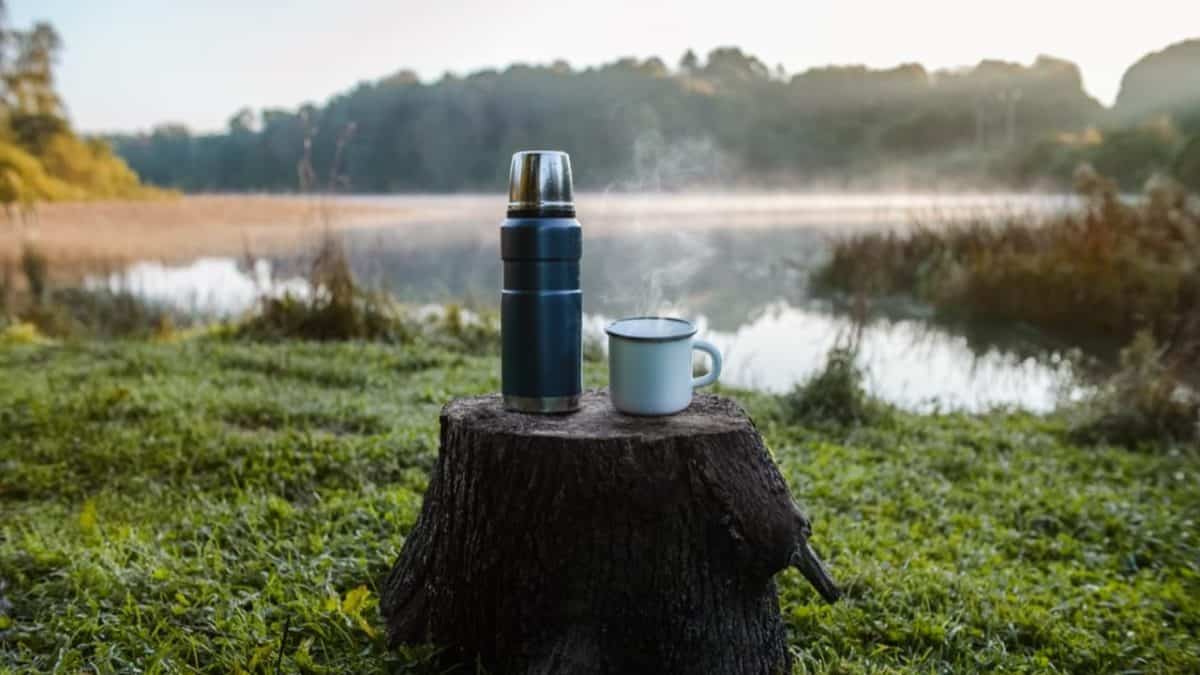
As you can already guess, this simple item is great for making tea in the morning, as it allows this beverage to stay hot for the rest of the day. In fact, a thermos flask can be a real godsend for those wild camping in cold weather. It helps campers stay warm and saves them from having to heat up water all the time.
Since Scotland is considered to be a paradise for wild campers, check out our guide to wild camping in Scotland as well.
Aluminum Foil & Garbage Bags
Bringing some aluminium foil to your wild camping trip is important. Not only will you be able to use it for sealing away the food leftovers, but also for preparing food that you don’t want to cook over direct heat. Garbage bags are just as essential – you want to leave the area you’ve been wild camping in exactly how you found it.
Portable Sink & Biodegradable Dishwashing Soap
Those who are really serious about wild camping will want to pack a small, portable sink, too. A biodegradable dishwashing soap, on the other hand, is the only one you’ll want to use if you care about the environment and don’t want to add anything harmful and toxic to it.
Cleaning Sponge
To clean all of those mugs, pots, pans, and utensils more easily, you will also have to bring a sponge. While it’s true that these things are very lightweight and don’t take up a lot of room, you can always take a knife and cut one in half if you’re really tight on space.
Toiletries
Toothbrush & Toothpaste
This one is a no-brainer. Even when you’re spending days (or weeks) deep in the wilderness, you still have to take care of your teeth.
Towel & Hand Towel
The towel is yet another simple everyday item that you should never go wild camping without. Make sure to pack a smaller hand towel too – it can come in very handy for smaller drying and cleaning jobs. Bring some tissues as well!
Hand Disinfectant & Biodegradable Soap
Just like in the case of dishwashing soap, your regular soap should also be biodegradable – you don’t want to leave toxic traces behind you. And, since you never know what kind of bacteria and germs you may come into contact with in the wild, pack a hand disinfectant too.
Hand Trowel & Toilet Paper
Let’s not kid ourselves – the call of nature has to be answered, even when it happens in, well, nature itself. A hand trowel will help you dig a hole that you’ll be able to relieve yourself in.
Insect Repellent & Sunblock
By using a repellent to keep the insects at bay, you can avoid a number of horrible diseases. The sunblock, on the other hand, will protect your skin from absorbing too many UV rays.
Camp Shower
Keeping yourself clean in the wilderness is important. To put it simply, the camp shower is a hanging shower curtain, which outdoor enthusiasts can use to cover themselves while bathing. It’s a must-have item when you’re going out on long group wild-camping trips without any hostels along the way.
Emergency Equipment & Survival Tools
GPS
It goes without saying, but never go deep into the wilderness without one of these bad boys – you don’t want to get lost. If you want to buy a higher-end GPS device, check out our Garmin vs Magellan comparison.
Map and Compass
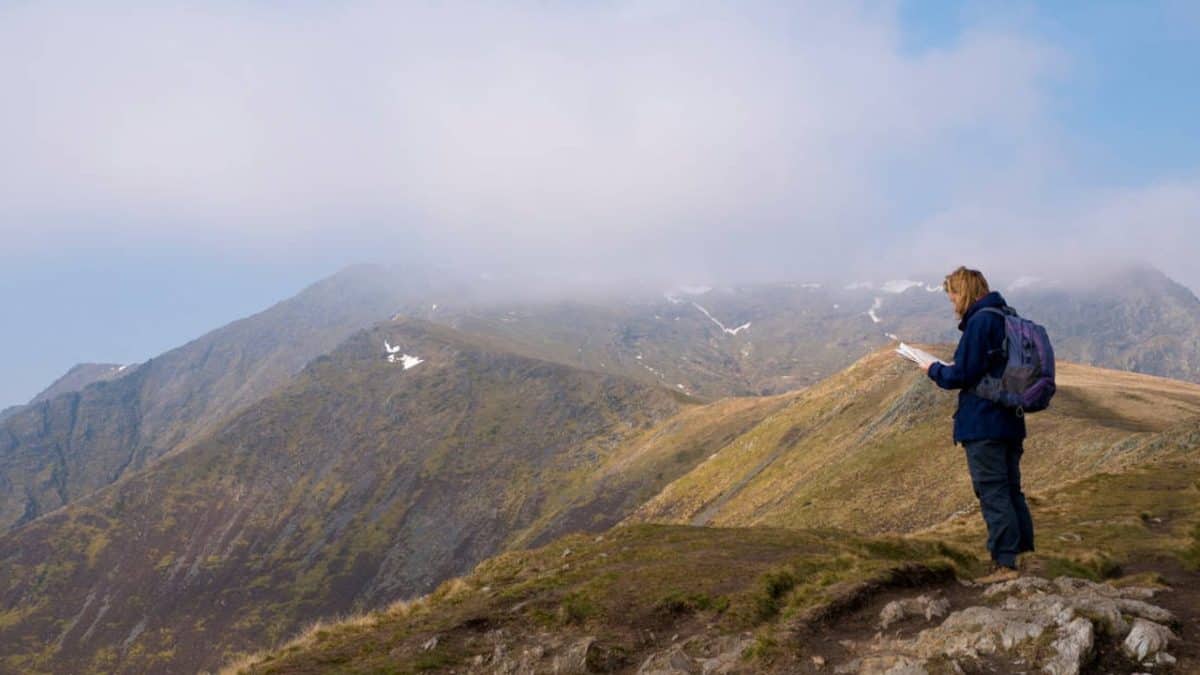
The GPS mentioned above is certainly a nifty device, but also one that runs on batteries. And once these run out of juice, you’ll have to navigate in an old-fashioned way.
Fire Starter
No one can carry an endless supply of matches. In the same manner, no lighter will last forever – it will, eventually, run out of fuel. This is why it’s very important to pack a fire starter, too. A tool such as this one can literally save your life when you’re lost and need to start a fire.
Water Purification Tablets
These can be life-savers – there’s no doubt about that. Water purification tablets will allow you to drink water from unsafe sources if you ever need to.
First-Aid Kit
Wild camping without a first-aid kit is a recipe for disaster. Make sure your first-aid kit has all the important stuff for the treatment of injuries, as well as drugs for ailments such as headaches and diarrhea.
Gaffa Tape
Around 1 meter of gaffa tape can go a long way on a wild camping trip. As you can already guess, gaffa tape can be of great help when it comes to emergency repairs in the middle of nowhere – think a tear in your tent, a snapped tent pole, a broken zip on your waterproof clothes, etc.
Swiss Army Knife
A multi-purpose tool such as this one is essential when it comes to wild camping. You’ll be thankful that you’ve packed your Swiss army knife whenever you find yourself in a situation where you need to cut something, and there are going to be a lot of those.
Flashlight & Lantern
Do not leave home without a flashlight – it can be a lifesaver in the dark. A lantern (or a few of them), on the other hand, will dissuade wild animals from wandering into your camp at night.
Head Torch
Why would you want to bring a head torch when you already have a flashlight and a lantern? The biggest advantage this device has over the other two is that it allows hands-free operation. As you can already guess, this can come in very handy when something needs to be done in or around the camp at night.
Emergency Camping Blanket
You never know what may happen – if you’re really unlucky, you may find yourself lost deep in the cold wilderness, far away from the camp and with no means of starting a fire. If that ever happens, you’ll be glad that you’ve packed your emergency camping blanket. It will help you fend off the night cold and survive until dawn.
Emergency Whistle
For anyone going out trekking or camping, a whistle is a must-have. Using this super-simple and super-cheap item can help other people find you when you’re stuck and need help. One of the best things about this almost weightless object is that it can be easily built into other pieces of hiking gear, like the straps of your backpack.
Signal Mirror
Another life-saving wild camping piece of equipment is the signal mirror. As its name suggests, this is a very simple item that you can use to communicate with people over long distances by using Morse Code (short and long flashes). These can be seen even from rescue helicopters and airplanes.
Bear Spray
Depending on the area you’re planning to wild camp in, you may want to pack a bear spray, too. Obviously, avoiding these beasts altogether is the best idea – always stay in groups and try to make as little noise as possible if you notice a bear around. However, if all of this fails, your last line of defense will be to use the bear spray mentioned above. For more effective use, do not carry this item inside your backpack – carry it on your belt instead.
Binoculars
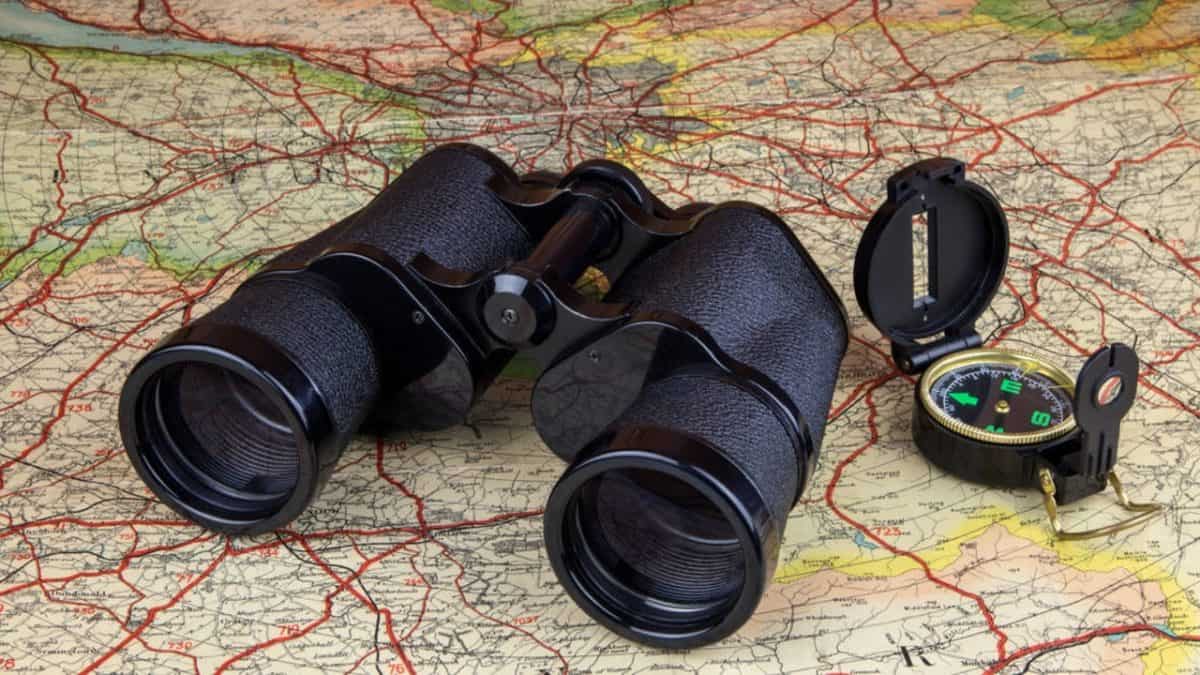
Binoculars can be very helpful when you’re wild camping in vast areas without any trees – with them, you’ll be able to better understand your position on the map. Obviously, you’ll also be able to use binoculars for looking at faraway objects whenever you want to.
The Optional Gear
Solar Battery Charger
While bringing a cell phone to a wild camping trip is not recommended if you want a real, immersive experience, this device can save your life in an emergency situation. And to keep your cell phone charged and working when you’re miles away from civilization, you’ll need to use a solar battery charger.
Ice Axe & Crampons
Obviously, you should bring these only if you’re planning to do some wild camping in the snowy mountains. One important thing to mention here is that gear like this is pretty much useless if you don’t know how to use it properly. So, make sure to obtain proper skills by doing some winter trekking before you set out on a serious cold-weather wild camping adventure.
Fishing Rod & Lures
Although this depends on the region you’ll be wild camping in, this kind of activity and fishing usually go hand-in-hand. What better way to spend your leisure time on a camping trip than by fishing on a nearby river? Just make sure to obtain the necessary permits if you’re planning to catch your dinner this way.
Hammock
Sleeping bags, camping cots, and camping chairs are one thing, and hammock is another. As long as you have a good pillow to support your neck, relaxing in a hammock is unlike anything else. These are a welcome addition to any camp, so try to pack one if you have any extra room.
Earplugs
While it’s true that sleeping in the wild is a lot less noisy than sleeping in a city apartment, sleeping under the stars sometimes means listening to wolves howling or owls hooting – a lot of people aren’t used to these sounds and can’t get a good night’s rest because of them. A set of good earplugs solves this problem – as well as the one of having to listen to your fellow campers snoring at night.
Kindle
Let’s be honest – when compared to a Kindle, physical books take up too much space, especially when you’re carrying a lot of camping gear and every ounce counts. Just get yourself a Kindle, load it with your favorite books, and read them while relaxing in your camp hammock mentioned above.
GoPro
While it’s true that snapping a few photos here and there is something you should definitely do on your wild camping adventure, you could also take the whole thing to another level with a GoPro. Capturing the memories of your trip with one of these devices is never a bad idea.
Drone
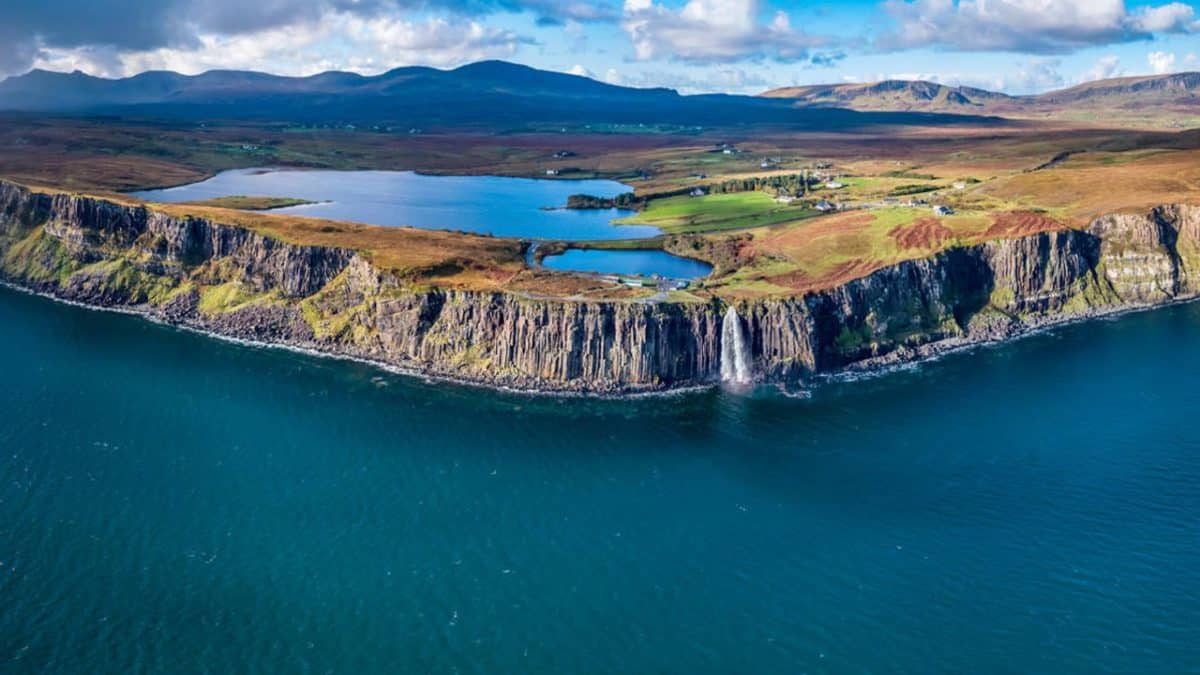
Even an action camera such as GoPro sounds boring to you? If that’s the case, your best bet is to get yourself a drone and spice up the memories of your wild camping adventure with some nice aerial views. Just make sure to purchase one of those smaller models – after all, you’re already carrying a lot of (essential) gear and don’t want to burden yourself even more with optional items.
Extra Cash
The point of wild camping is to spend a couple of days (or weeks!) away from civilization. Still, that doesn’t mean that you shouldn’t bring any money with you. This is especially true if the route you’ll be taking goes through villages and small towns – you never know if you’re going to need some additional cash for extra food and drinks, or even souvenirs.
When you’re wild camping, you don’t have the safety or the amenities of an established campsite to rely on. This is why it’s extremely important to pack well and ensure that you’re adequately prepared for an adventure that will be both safe and enjoyable. Hopefully, our checklist of the wild camping essentials and optional gear will help you pack everything that you might need in the Great Outdoors.
Now that you have everything you need, it is time to pick a spot. Here are the best wild camping spots in the United Kingdom.

I love hiking, backpacking, and camping. From the Camino de Santiago to the West Highland Way in Scotland or simply a great day hike on the weekend. Hiking refreshes me, my mind, and keeps my body reasonably fit. So far I have walked three Camino routes and many other long distance hikes in the UK, Canada, and around the rest of Europe. One of the best was my hike up Ben Nevis.

